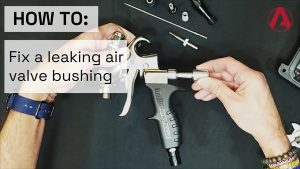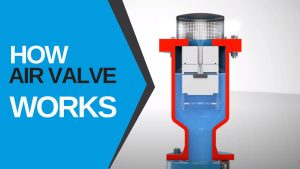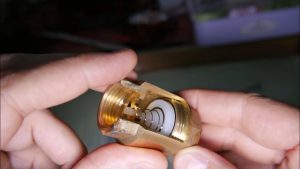What is API 600 Standard?
API Standard 600, from the American Petroleum Institute, describes the criteria for valve design/construction and the material/trim designations for steel gate valves. The most recent version of this standard was published in January 2015, effective as of July 15, 2015.
Scope of API 600
API 600 covers bolted bonnet steel gate valves for the petroleum and natural gas industries, specifically where “corrosion, erosion, and other service conditions indicate a need for full port openings, heavy wall sections, and extra large stem diameters.”
Design Specifications of API 600
API 600 specifies design criteria related to the following:
- Body wall thickness
- Bonnet wall thickness
- Body dimensions
- Flanged ends
- Butt-welding ends
- Body seats
- Openings
- Bonnet dimensions
- Bonnet-to-body joints
- Gate
- Yoke
- Stem and stem nut
- Packing and packing box
- Bolting
- Auxiliary connections
What is Valve Trim?
The trim, particularly the mating elements that regulate the stream to the controller’s demands, is at the heart of the control valve. Each process is distinct in its own right, necessitating particular flow control features. Valve trim includes the stem, plug, disc, seating surface, etc. It’s also the plug and seat arrangement’s actual shape. The flow properties of the valve are determined by the shape of the valve plug.
Valve Trim Parts
The valve-specific trim includes the back seat, glands, spacers, guides, bushings, retention pins, and internal springs.
Disc
A disc is the initial valve trim component. The disc is the component that, depending on its position, enables, throttles, or stops the fluid flow. The name of the valve often originates from the type of disc. Examples include gate, ball, plug, and needle valves, which have discs that are the same shape as the name.
A valve disc can be forged, cast, or manufactured. The sealing face of the valve disc is occasionally hardened to improve wear resistance. The disc required a smooth machine surface to reduce friction with a seat; the valve disc is a pressure-maintenance component.
In the closed position, a disc rests against the stationary valve seat. The stem may move via manual or automated actuation.
Seat
The seat provides the disc with a place to set and seal against. A valve may have more than one seat. There is only one seat on a globe valve and a swing-check valve. A gate valve and a ball valve, on the other hand, have two seats, one upstream and the other downstream.
The efficiency of the seal between the valve disc and seat is directly proportional to the seat leakage rate. Valve seats can be permanent or removable rings. Seats on valves are often screwed, welded, or integrally cast or forged, and are toughened through heat treatment or hard facing.
For optimal sealing, the seating area must have a fine surface polish. For non-critical applications, non-metallic seats were utilized in some ball valves and plug valves. Valve manufacturers produce numerous styles of combination valve seats that combine elastomer and metal seats to attain the requisite leak tightness that metal seats alone cannot achieve.
Back Seat
The back seat comprises a shoulder on the stem and a mating surface on the underside of the bonnet. When the stem is entirely open, it forms a seal. It inhibits media leakage into the packing chamber and into the environment. Note: For safety reasons, it is NEVER recommended to change the packing while the valve is under pressure.
Stem
The stem links the handwheel/actuator and the disc. The valve disc moves and positions from the stem movement. The valve stem delivers the required motion to the disc, plug, or ball for the valve’s opening, closing, or setting. The stem connects the valve’s actuator, handwheel, or lever at one end to the disc at the other.
The linear motion of the disc opens or closes the valve in gate and globe valves, whereas the disc rotates to open or close the valve in the plug, ball, and butterfly valves. Stems are typically stainless steel and typically attach to the disc via connections or other mechanical means.
API 600 Valve Trim Number Chart & Service Suitability
| Trim | Material | Seat | Disk | Backseat | Stem | Notes |
|---|---|---|---|---|---|---|
| 1 | 410 | 410 | 410 | 410 | 410 | |
| 2 | 304 | 304 | 304 | 304 | 304 | |
| 3 | F310 | 310 | 310 | 310 | 310 | |
| 4 | Hard 410 | Hard 410 | Hard 410 | 410 | 410 | seats 750BHN Min. |
| 5 | Hardfaced | Stellite | Stellite | 410 | 410 | |
| 5A | Hardfaced | Ni-Cr | Ni-Cr | 410 | 410 | |
| 6 | 410 and Cu-Ni | Cu-Ni | 410 | 410 | 410 | |
| 7 | 410 and Hard 410 | Hard 410 | Hard 410 | 410 | 410 | seats 750BHN Min. |
| 8 | 410 and Hardfaced | Stellite | 410 | 410 | 410 | |
| 8A | 410 and Hardfaced | Ni-Cr | 410 | 410 | 410 | |
| 9 | Monel | Monel | Monel | Monel | Monel | |
| 10 | 316 | 316 | 316 | 316 | 316 | |
| 11 | Monel and Hardfaced | Stellite | Monel | Monel | Monel | |
| 12 | 316 and Hardfaced | Stellite | 316 | 316 | 316 | |
| 13 | Alloy 20 | Alloy 20 | Alloy 20 | Alloy 20 | Alloy 20 | |
| 14 | Alloy 20 and Hardfaced | Stellite | Alloy 20 | Alloy 20 | Alloy 20 | |
| 15 | 304 and Hardfaced | Stellite | Stellite | 304 | 304 | |
| 16 | 316 and Hardfaced | Stellite | Stellite | 316 | 316 | |
| 17 | 347 and Hardfaced | Stellite | Stellite | 347 | 347 | |
| 18 | Alloy 20 and Hardfaced | Stellite | Stellite | Alloy 20 | Alloy 20 |
Related Tags :
Ten articles before and after
Primary Valve Standards – Zeco Valve Company | Professional valve manufacturer
VALVE TEST STANDARDS – Zeco Valve Company | Professional valve manufacturer
DESIGN AND MANUFACTURING STANDARDS – Zeco Valve Company | Professional valve manufacturer
COMMON VALVE ABBREVIATIONS – Zeco Valve Company | Professional valve manufacturer
Valve Material Types – Zeco Valve Company | Professional valve manufacturer
The Maintenance of Valves – Zeco Valve Company | Professional valve manufacturer
The Installation of Zeco Valves – Zeco Valve Company | Professional valve manufacturer
Happy New Year 2019 – Zeco Valve Company | Professional valve manufacturer












